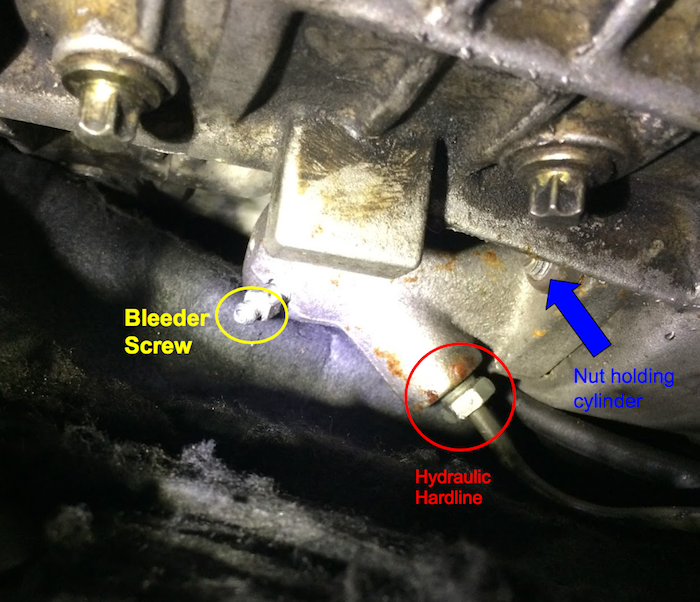- 01/27/2017
- 1 Min Read
- By: Alex Fiehl
How to Replace & Bleed a BMW Clutch Slave Cylinder (E36)
Manual transmission cars often involve less maintenance and are more efficient than their automatic counterparts. Aside from a clutch change somewhere around 100-150K miles, they are relatively maintenance free. When a clutch slave cylinder starts to wear and is showing age, or if you upgraded your clutch and you want to get a different clutch pedal feel, one of the things you can do is replace your slave cylinder. When you depress the clutch pedal, hydraulic fluid enters the slave cylinder and extends a rod that engages the throwout bearing, disengaging the clutch. When these go bad or need replaced you will notice a “mushy” pedal or some issues with getting the clutch to disengage. This is actually a quite simple fix and a great thing to DIY.
You will need:
- New clutch slave cylinder (see note at bottom)
- DOT recommended Brake fluid
- 10-13mm socket set with ratchet
- Clear rubber tubing and empty bottle
- 7-9mm wrench
- 9-11mm brake line wrench
- Gloves and safety glasses
A friend is needed to bleed the system if you do not have a one-man brake bleeding system.
Once the car is securely in the air, grab your tools and crawl under. To release pressure on the slave cylinder's push rod, crack the bleeder screw but do not remove it.
Remove the two nuts holding the slave cylinder to the transmission, carefully remove them and as straight as you can pull it out.

Now you could have removed the hardline before taking it off, but I found it easier to remove after. Use a flare nut wrench to remove the brake-line-style fitting from the cylinder. The reason you will benefit from using the brake line wrench is these fittings are made of very soft metal, which is incredibly easy to strip.
Prepare the new slave cylinder
I recommend bench bleeding the new cylinder to give it some pressure so you can feel it seat properly, but that isn’t completely necessary.
Once the line is removed connect the line to the new cylinder and carefully put the cylinder back into position, tighten the nuts back on and make sure it is secure.
Now put the tube on the end of your bleeder screw and into the bottle, and bleed your clutch like you would bleed your brakes, for those that haven’t bled brakes, the way I do it is; with bleeder screw tight, pump the clutch a few times then hold it down, open bleeder screw completely (but do not remove the bleeder screw) and leave it open until it is just dripping, tighten screw and repeat making sure to top off your brake fluid in between. Once pressure feels good on pedal you are done. On the e36 there is very little play at the top of the pedal so you should feel pressure from beginning of pedal all the way through the disengagement of the clutch.
Note: when choosing a new slave cylinder, go with a direct OE replacement or genuine part, unfortunately when I replaced mine I was unable to get the exact one I wanted from the local store, so I just bought the most expensive one they had thinking it would be almost as good as a genuine BMW part. I had finished the install and was bleeding the cylinder and then I had a sudden rush of fluid leaking from my bell housing, immediately pulled the slave cylinder and saw the push rod had not sat properly too the throwout bearing and the cylinder pushed the rod out, into my bell housing. Luckily I was able to get it out with some luck and a strong magnet the next day. After it was out I returned it and ordered the correct part and waited. When the correct part came in, everything went so much smoother and I didn’t have any issues.











